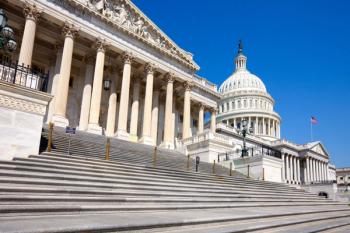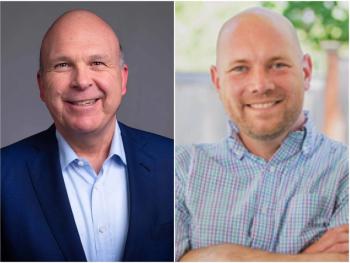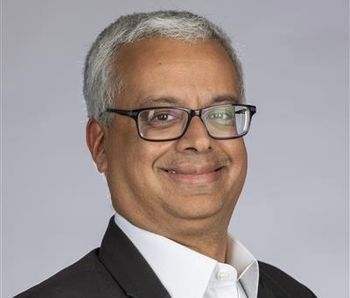
New York state hospital leader is ready to pass the baton
After leading the Healthcare Association of New York State for a decade, Bea Grause will step down next year. She talks about her tenure and the challenges facing New York’s hospitals.
After many years in healthcare leadership, Bea Grause says she is ready for a change.
The president and CEO of the
Grause, who recently celebrated her 68th birthday, says it was a personal choice, but she also thought it would be good for the association to have new leadership.
She says she “wanted to make sure during these challenging times, that I was passing the baton at the right time for the organization and the right time for our members.”
Before joining the New York association, Grause led the Vermont Association of Hospitals and Health Systems for 14 years. She began her career as a registered nurse, and also spent 10 years working in Washington, D.C.
In an interview with Chief Healthcare Executive®, Grause talks about the difficulties facing New York hospitals, the impact of pending changes to Medicaid programs, and the tough road for rural hospitals. Given the mounting problems in the coming years, Grause said the next leader of the association is going to have to possess a wealth of experience.
“I think it's going to be really important for this leader to have a deep knowledge of the industry and to be able to hit the ground running,” she says.
(See part of the conversation in this video. The story continues below.)
‘Devastating step backward’
Many New York hospitals say they are losing money or barely breaking even.
A Healthcare Association of New York State
New York hospitals are anticipating greater headwinds with cuts to Medicaid. The federal tax package known as H.R. 1 is projected
"Our members, whether they're urban, rural, suburban, large or small, are really concerned about H.R. 1's impact to New York State," Grause says.
Hospitals and health systems have said the cuts are going to pose significant hardships, as they will see less aid and more patients without insurance.
In New York state, as many as 1.5 million residents are expected to lose coverage, Grause says.
“That is for a state that has worked so hard for decades to provide health insurance for everyone who needs it,” she says. “Our uninsured rate is less than 5% currently. It's a devastating, devastating step backward.”
With new limits on how states can finance their Medicaid programs and changes like work requirements, hospitals are bracing for significant changes and an uptick in uninsured patients.
New York hospitals are drawing up plans to deal with additional financial headwinds. Grause says she fully expects to see
“Health insurance coverage does absolutely nothing to prevent health care demand,” Grause says. “So if someone is sick or injured, they will still seek care. If they have fewer options for where to get that care, they will go to the only place where the door is always open, and that's the hospital emergency room.”
Health system leaders have said cuts to Medicaid could lead to hospitals reducing services or even closing their doors. With Medicaid programs changing in the near future, New York hospitals are taking a close look at their services.
“The impact to New York State, because New York State covers legal immigrants, it's particularly challenging,” she says.
With New York being one of the largest states, boasting a population of 20 million, state agencies will face challenges in simply establishing programs to verify work requirements and comply with other mandates, she says.
- Read more:
States will face hard choices with Medicaid
Concerns for rural hospitals
Grause worries that rural hospitals may have to weigh whether they can maintain services such as labor and delivery units.
“OB services may be a self-sustaining service in a more populated area, but in a rural area, it's very, very challenging to run effectively and efficiently,” she says.
At the same time, a rural maternity unit is often the only one for many miles in rural counties, so shuttering those units can be difficult. “It's very, very challenging for them to make those types of choices,” she says.
The federal government has launched the new
Half of the money is slated to be divided across the 50 states equally, and the other half will be awarded competitively.
While Grause hopes the funds can help rural hospital systems, she says the money won’t offset the losses in Medicaid funds over the next decade. She’s hardly alone in that assessment. KFF estimates that
“Having a revenue source in light of the overall changes of HR 1 is welcome, absolutely, but I would describe it as a Band-Aid over a bullet hole,” Grause says.
She notes challenges in the construction and design of the new rural health program, which was hastily crafted to win approval from senators leery of cuts to Medicaid programs.
“We're glad it's there, but we'll see how it evolves,” she says.
Hoping for lasting change
Reflecting on her tenure, Grause says she’s enormously proud of how the association and New York hospitals responded during the COVID-19 pandemic.
“It was a terrible time,” she says. “Do not want to revisit it, and I'm sure none of our members do either. But we got through it because we cared about each other and didn't give up. And so I'm very, very proud of the work of my team.”
Last year, the New York association released a
The report aims to draw attention to the difficult environment and galvanize support for efforts to help maintain and expand the healthcare workforce.
She says the report was produced “to try to explain to people who don't live in the hospital world why we are so concerned about the hospital world.”
Grause also finds satisfaction in the work that the association does to help policymakers understand the needs of New York’s hospitals and take steps to support them.
“We exist to help our members keep their doors open and take care of their communities,” Grause says. “So I'm very proud of that kind of continuous work that we do, day in and day out.”
















































